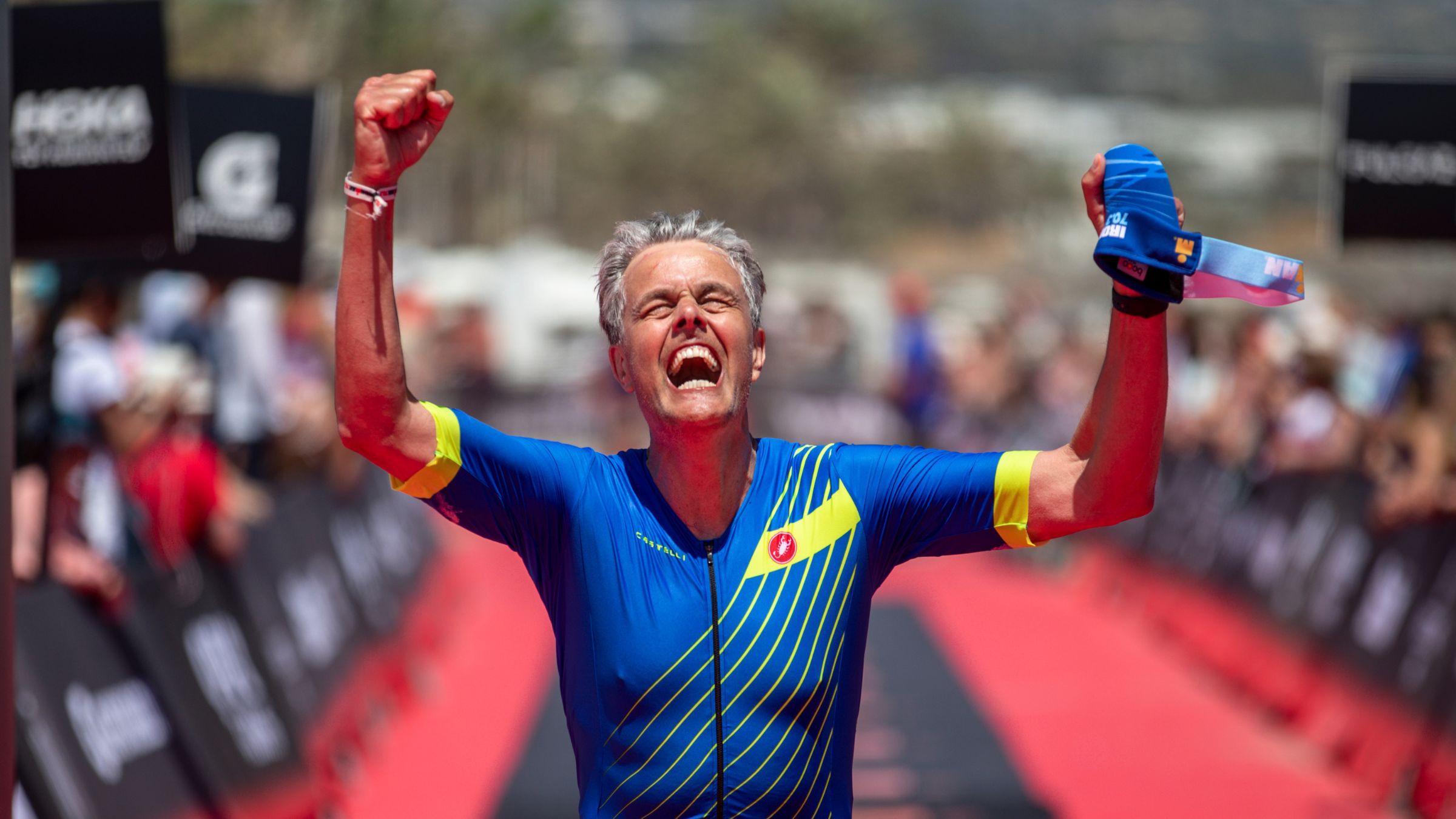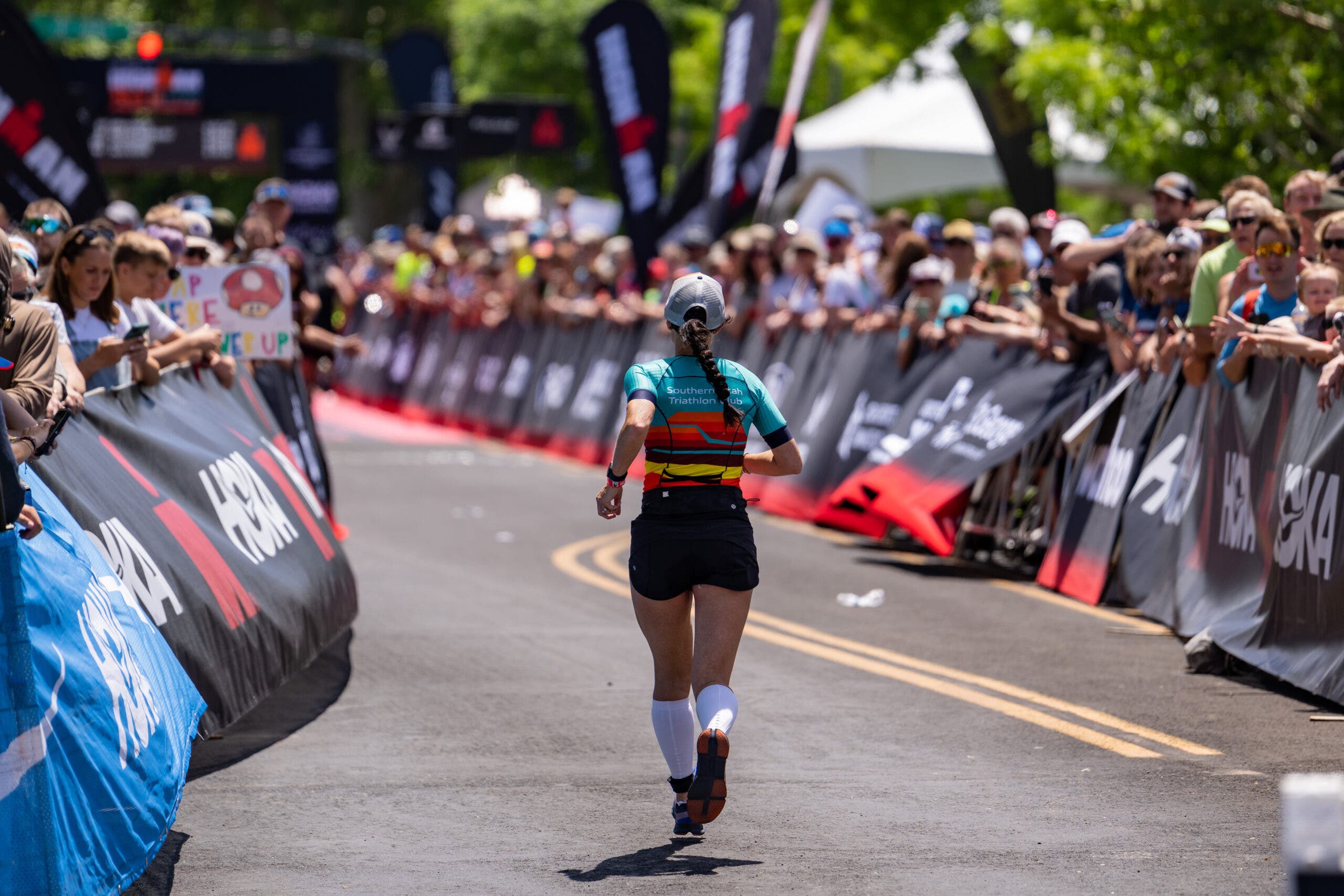What's A Good Triathlon Time?

What's a good triathlon time? It depends on the race, the athlete, and the goals for the day. (Photo: Pablo Blazquez Dominguez/Getty Images)
A common question among triathletes, particularly those new to the sport, is how they’re going to stack up, what should they expect, what’s a “good” triathlon time. The answer, of course, depends on the race and course, as well as your individual fitness: a good Olympic-distance triathlon time is very different from a good Ironman time. In fact, there are so many factors at play – course, age, weather – there’s no easy answer. But that’s not going to stop me from trying.
By poring through the results of many races, I can start to build a picture of what performances look like across a range of triathlon distances. Average times at these distances can then give us a baseline for performance and help set expectations. We could also argue over what defines a good triathlon time, but for the purposes of this article, I’ve chosen to define it as a finish time in the top 20%.
Before I dig into the results, I want to give a few boring, technical notes on the data. For Ironman and Ironman 70.3 races, I’ve used results from 2021 and 2022. For Olympic distance, I’ve used a range of 5,150 results over several years.
What’s a good Ironman triathlon time?
Ironman racing is a long day for anyone, and finishing times range from professionals breaking eight hours to athletes just making the 17-hour cut-off. On average, though, according to the data, men finish an Ironman in a time of 12:34 and women in 13:28 (in 2019, men and women averaged 12:27 and 13:16, respectively).
But Iron-distance races vary widely, and so do the course averages. For men, this ranges from an average time of 10:08 in Ironman Vitoria-Gastiez (a small race with a lot of fast competitors in 2021) through to a 14:36 at Ironman Philippines. Women range from 11:01, again at Vitoria-Gastiez, through to 15:03 at Ironman Philippines.
RELATED: The Top 7 Easiest Ironman Courses
We compete in age groups, though, and age is a big factor in quantifying a good triathlon time. Aging eventually means getting slower, although at Ironman it’s not the youngest, but those in their 30s and 40s who tend to perform the best. By far, the biggest age group at Ironman is male 40-44, and on average they finish in 12:22. Women in the same age range (40-44) finish an Ironman in 13:28 on average.
Beat any of these average times and you’re faster than half of the field. For many that’s a good Ironman time, but let’s get a bit more competitive and look at the times needed to finish in the top 20% of the field.
On average men need to finish in under 11:03 to be in the top fifth of their age group. However, that top fifth can be as fast as 10:40 if you’re 3o-34, or if you’re still racing in your late 70s, a 15:01. A woman will need an 11:44 to enter the top 20%. Again, 30-34 year-olds are the fastest with 11:11, and if you’re racing in your 60s, a 14:11 is needed.
For many, the biggest measure of a good Ironman triathlon time is qualifying for the World Championship races in Kona and Nice. Qualifying times vary a lot more, as they’re dependent on the allocation of a limited number of slots at each race. We don’t know for certain how the new 2026 qualification process with the return to a one-day race in Kona will impact what constitutes a good finish time. But historically, it meant finishing in the top 1% of your age group.
RELATED: Data Dive: 9 Takeaways on Qualifying for Kona
If we focus on the biggest age groups, then the 40-44 men have an average Kona qualification time of 9:35, and for women in that age range, it’s 10:37. For men, if you’re 30-34, then you’ll need at least a 9:17 on average to qualify; for women, a 10:18.
So what’s a good Ironman time? Somewhere between 9:17 and 15:01, depending on your age, course, and goals.
RELATED: Triathlete’s Complete Guide to How to Train for an Ironman
| Ironman Finishing Times | |
| AVERAGE | |
| Men | 12:34 |
| Women | 13:28 |
| TOP 20% | |
| Men (Average) | 11:03 |
| Women (Average) | 11:44 |
| WORLD CHAMPS QUALIFYING | |
| Men 40-44 | 9:35 |
| Women 40-44 | 10:37 |

What’s a good 70.3 triathlon time?
After crunching the numbers, the average Ironman 70.3 finish time is 5:53 for men and 6:20 for women (in 2019, average times were 5:51 and 6:18, respectively). If we start to consider variations between races (some 70.3 courses are considered “easier” than others), then we see male average times vary from 4:47 through to 7:11. Women’s average times vary from 5:16 through to 7:21.
Focusing again on the age groups we compete in, younger tends to perform better. The average 18-24-year-old man finishes in 5:44, and we can move back through the age groups to 80-84 for an average of 7:58. It’s a similar pattern for women, with 18-25-year-olds fastest at 6:08, and then we can walk to 70-74 year-olds with an average of 7:25.
Sticking with a top 20% age group time as our marker of a good triathlon time for the 70.3 distance suggests that for women 5:34 is a “good” 70.3 finishing time and for men it’s a 5:10. Again, 18-23 is the fastest women’s age group, with a top 20% time of 5:18. For men, a 4:52 finish makes it into the top 20% of 18-24 year-olds. At the other end of the spectrum, 70-74 year-old women need a 6:29, and 75-79 year-old men need a 6:47.
RELATED: Getting Ready for a 70.3? We Got You Covered!
| 70.3 Finishing Times | |
| AVERAGE | |
| Men | 5:53 |
| Women | 6:20 |
| TOP 20% | |
| Men | 5:10 |
| Women | 5:34 |
What’s a good Olympic-distance triathlon time?
At the Olympic distance, the average finish time is 2:53 for men and 3:07 for women. In the results of the 5150 series I’ve considered, this ranges from an average Olympic finish time of 2:21 to 3:27 for men. Women’s average finishing times vary from 2:36 to 3:37.
Breaking down the average finishing time by age groups, the youngest are once again the fastest. 18–24-year-olds have an average finish time of 2:47 for men and 3:05 for women. In the older age groups, we reach averages of 3:29 for men 75-79 and 4:05 for women 70-74.
To get to the front, a man needs a 2:35 to be in the top 20% while a woman will need a 2:49 to make it. Again, for younger men, times are faster, and an 18–24-year-old would need an Olympic time of 2:23 to break in. 18–24-year-old women also look to be the fastest with a 2:43 to enter the top 20%.
RELATED: Four Printable Training Plans for Every Distance
| OLYMPIC FINISHING TIMES | |
| AVERAGE | |
| Men | 2:53 |
| Women | 3:07 |
| TOP 20% | |
| Men | 2:35 |
| Women | 2:49 |
A “good” triathlon time depends…
So I may not have been able to exactly define good triathlon times, but digging into the data builds a picture of what a good time looks like depending on your age and race goals. If you accept my top 20% definition, this ranges from a low two-hour Olympic triathlon through to an 11-hour Ironman. If you’re newer to the sport, the average times might act as a better guide to get started. And for some, it will be the sharp end and World Championship qualifying times that count as good for the super-competitive.